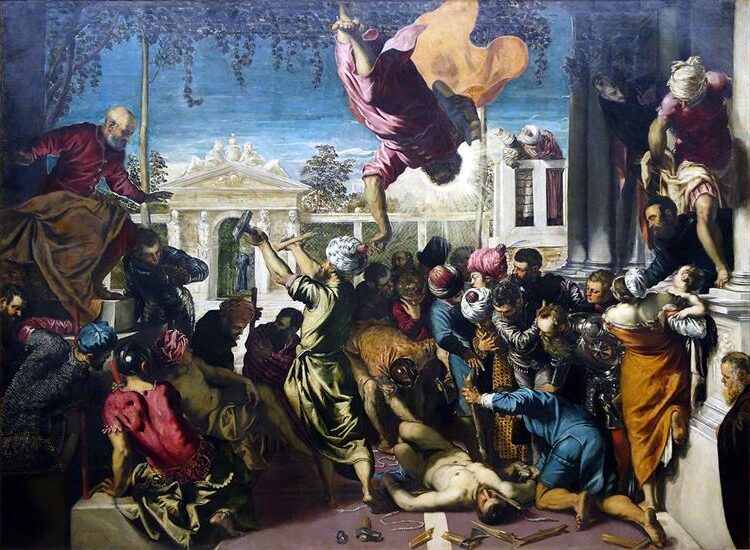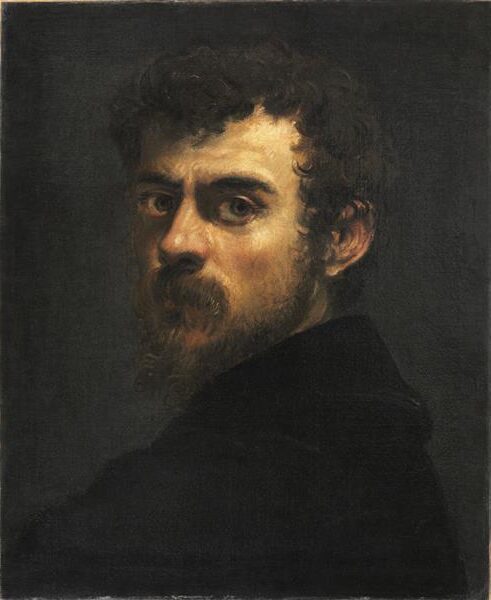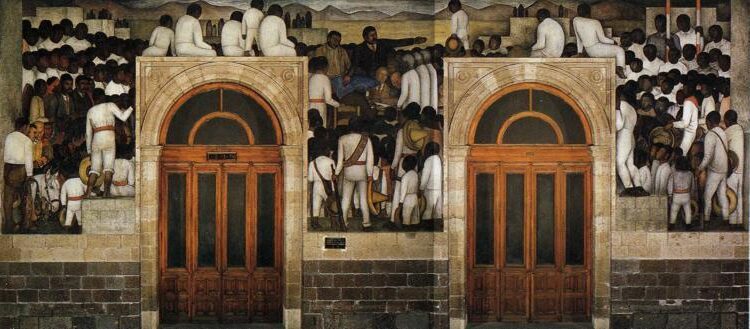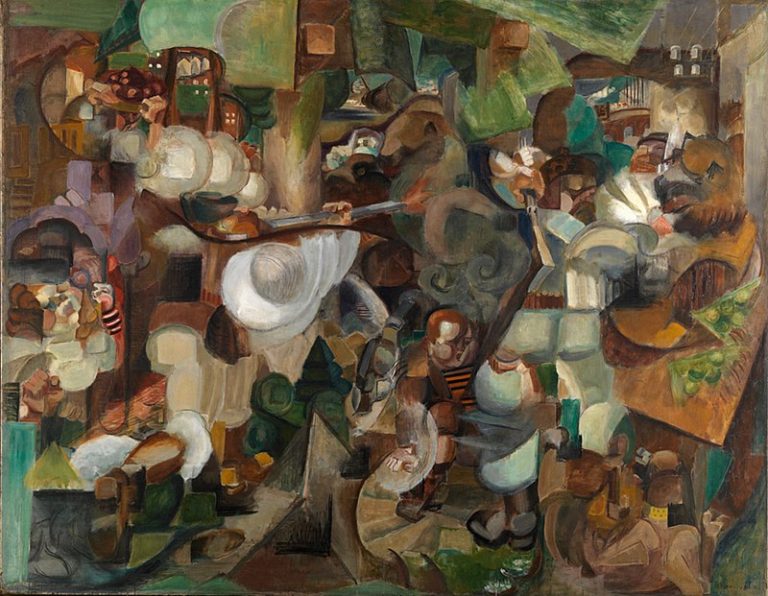Tintoretto Paintings: Exploring the Genius of Venetian Artistry
Born: c.1518; Venice, Italy
Death: May 31, 1594; Venice, Italy
Art Movement: Mannerism (Late Renaissance)
Nationality: Italian
Influenced By: Jacopo Bassano, Maarten de Vos, Eugene Delacroix
Institution: Self-taught
Tintoretto Paintings: Exploring the Genius of Venetian Artistry
Tintoretto: Life and Influence
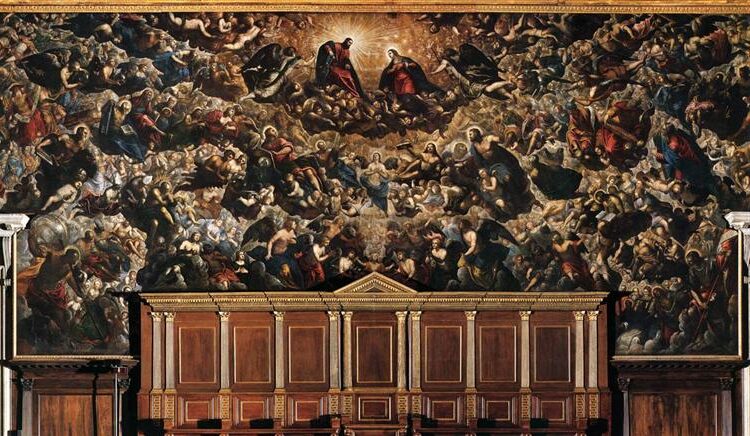
Paradise (c.1592) by Tintoretto
Tintoretto, born Jacopo Robusti in Venice, was a leading figure in Renaissance art. His bold use of color and light set him apart. He belonged to the Venetian School and collaborated with artists like Titian and Paolo Veronese. His son, Domenico Tintoretto, carried on his artistic legacy.
Early Years and Artistic Development
Jacopo Robusti, known as Tintoretto, was born around 1518 in Venice. The son of a dyer, he was called “Tintoretto,” meaning “little dyer.”
From a young age, he displayed a talent for painting. His training began under the tutelage of a minor artist, but he was greatly influenced by the works of Michelangelo and Titian.
Tintoretto learned quickly and developed a style marked by dramatic lighting, vigorous compositions, and rich color. His early works already showed his characteristic energy and dynamic movement. The ambition to create large-scale masterpieces remained a constant throughout his career. Tintoretto’s unique approach set him apart, earning him a significant place within the Venetian School.
The Venetian School and Contemporaries
Tintoretto became an important figure in the Venetian School alongside contemporaries like Titian and Paolo Veronese. This period in art emphasized color and light, with a focus on expressive imagery and complex compositions.

The Last Supper (1592–1594) by Tintoretto
While Titian was known for his mastery of color, Tintoretto’s work was distinguished by its bold interplay of light and shadow.
He built strong ties with influential figures like Giorgio Vasari, who praised Tintoretto’s energy and technique. Tintoretto often accepted commissions for religious settings, including churches and schools in Venice, where he completed notable works such as the “Last Supper” and “The Miracle of the Slave.” His contributions to Renaissance art continue to influence modern artists.
Domenico Tintoretto and Artistic Legacy
Domenico Tintoretto, the son of Jacopo, followed in his father’s footsteps. He apprenticed under his father and learned the craft of painting in the dynamic style that defined the family name.
Domenico worked on several projects with Jacopo, contributing to the completion of large commissions.
After Jacopo’s death in 1594, Domenico continued to preserve his father’s legacy through his own works. He maintained the expressive and dramatic style that became synonymous with the Tintoretto name. The family’s artistic achievements cemented their importance in Italian and Venetian art, influencing generations of artists to come.
Stylistic Elements and Techniques

The Assumption of the Virgin (1582–1594)
Tintoretto, a key figure in Venetian art, was known for his bold techniques and innovative style. His works incorporate elements such as dramatic lighting, exaggerated figures, and novel perspectives, which contribute to their unique visual impact.
Innovations in Mannerism
Tintoretto exerted a significant influence on the Mannerist style by deviating from the Renaissance period’s traditional practices. Mannerism, characterized by artificiality and a preference for complex compositions, found a natural practitioner in Tintoretto.
He infused his paintings with elongated forms and dynamic art. His theatrical creations broke away from linear harmony, showcasing emotion through intense human expression and dramatic scenes. This approach gave life to his art, setting him apart from his contemporaries.
The Use of Light and Brushwork
One of Tintoretto’s trademarks was his dramatic use of light and shadow, which he skillfully blended to create emotional depth.
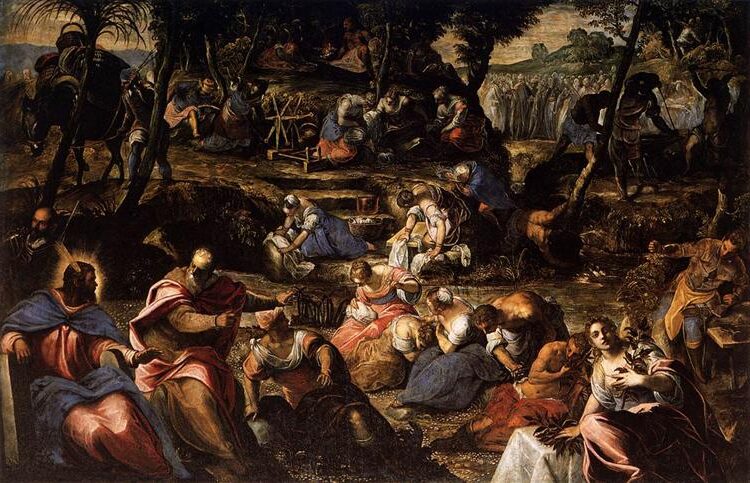
The Jews in the Desert (c.1593) by Tintoretto
His brushwork was both swift and deliberate, capturing a sense of movement and vitality. By implementing a striking contrast between light and dark, he added a sense of drama that highlighted the scenes’ emotional and thematic elements. This technique not only enhanced the muscular figures but also made everyday moments appear monumental.
Perspective and Composition
Tintoretto also revolutionized the use of perspective and composition in his paintings.
He often employed a bold use of perspective that drew viewers into the scene. His compositions were alive with energy, utilizing unorthodox spatial arrangements that gave an impression of depth and movement. This daring approach to abstraction allowed him to create more immersive and vivid experiences for the audience. Through distorted figures and receding space, Tintoretto’s works achieved a dynamic tension rarely seen in his time.
Key Works and Artistic Themes
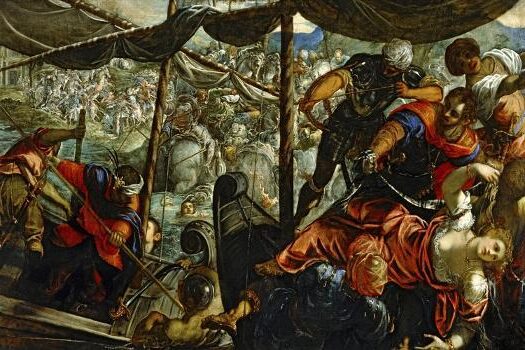
Battle between Turks and Christians (1588–1589) by Tintoretto
Tintoretto’s art is known for its dramatic style and emotional intensity. He often explored themes of religion, mythology, and human figures, which are evident in his variety of works.
Religious Paintings and Frescoes
Tintoretto often focused on religious subjects, bringing these stories to life with powerful imagery. One of his most notable works is The Last Supper, where dynamic lighting creates a sense of movement and drama. The Miracle of the Slave shows his skill in rendering emotion and action.
His Crucifixion is another example, filled with energy and vivid expressions of faith. Paintings like the Assumption of the Virgin and The Resurrection of Christ highlight his mastery in depicting biblical scenes, making these stories resonate with viewers through expressive figures and vivid contrasts.
Mythological and Allegorical Works
Mythological themes allowed Tintoretto to explore human nature and divine interactions. The Origin of the Milky Way is a prime example, using myth to captivate viewers with celestial imagery. In Mars and Venus Surprised by Vulcan, he portrays tension and surprise, while Judith and Holofernes presents themes of courage and vengeance.
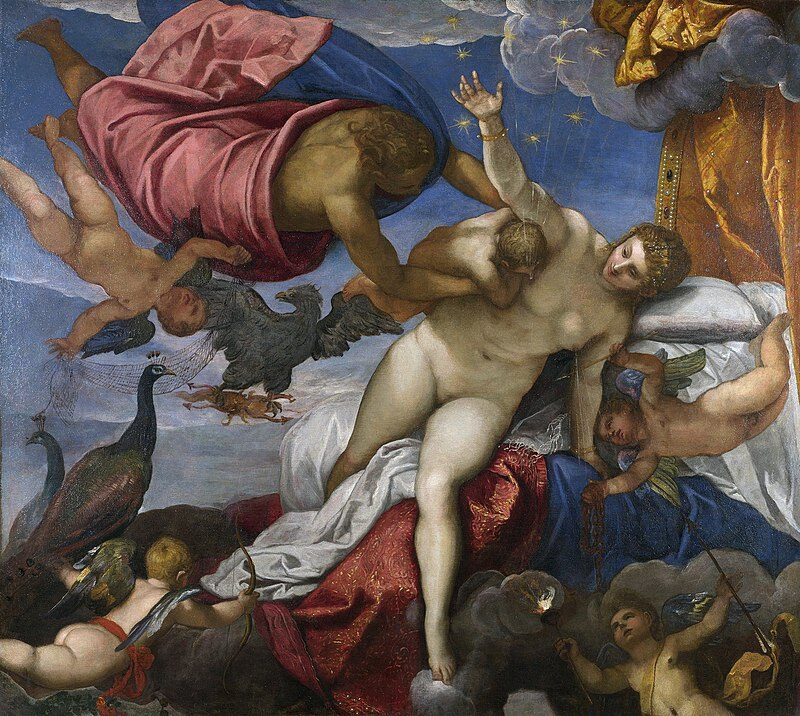
The Origin of the Milky Way (c. 1575–1580) by Tintoretto
The Creation of the Animals showcases divine creation under a mythological framework. His work frequently blends allegory with mythology, inviting viewers to consider the deeper meanings behind each tale.
Portraiture and Human Figure
Tintoretto was also a skilled portrait artist, capturing the essence of his subjects with precision. His Portrait of Doge Girolamo Priuli stands out for its attention to detail and expression of character. In Portrait of Alvise Cornaro, Tintoretto’s keen observation highlights the sitter’s thoughtful demeanor.
Paintings like Tarquin and Lucretia and Susanna and the Elders focus not just on individual figures, but relationships and emotions between them, emphasizing his ability to convey complex narratives through gesture and gaze. His work in portraiture often reflected the status and personality of his subjects, ensuring their stories were told through his brushwork.
Cultural Impact and Historical Significance

Visitation (c.1588) by Tintoretto
Tintoretto’s artistic brilliance reshaped Venetian art and left a lasting legacy on Renaissance paintings. His masterpieces continue to be celebrated and preserved in renowned art institutions worldwide, ensuring his ongoing influence.
Tintoretto’s Influence on the Renaissance
Tintoretto, known for his bold brushwork and use of dramatic gestures, significantly influenced Renaissance paintings. He infused Venetian art with dynamic energy, departing from the harmonious styles of his contemporaries.
His works, such as “The Presentation of Jesus in the Temple” and “Worship of the Golden Calf,” showcased his unique artistic marksmanship. His ability to use oil on canvas to create emotionally charged scenes set a new standard, inspiring future artists like Eugene Delacroix.
Key locations in Venice, including the Scuola Grande di San Rocco and Scuola Grande di San Marco, house many of his extraordinary works. These institutions played a crucial role in displaying his art, highlighting the city’s commitment to preserving its rich art history.
Preservation and Display in Modern Times
Today, renowned institutions like the Museo del Prado ensure the preservation and public display of Tintoretto’s paintings. His “Self-Portrait” and other masterpieces receive dedicated care, allowing audiences to appreciate his historical significance.
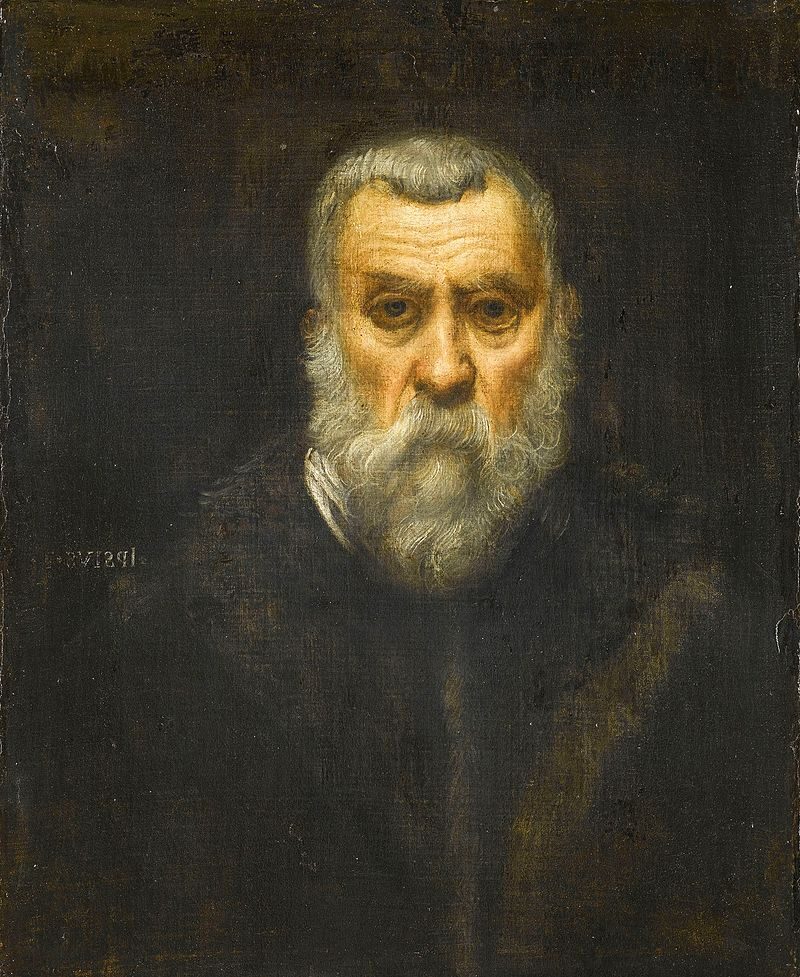

Tintoretto’s works are revered for their intricate compositions and emotional depth. His influence extends across cassoni and large-scale paintings, shaping the way art is showcased in modern times.
The custodianship of his paintings by places like the Scuola della Trinita ensures that his legacy remains accessible, making his contributions to art history evident to all who admire Venetian art.
Frequently Asked Questions
Tintoretto’s paintings are marked by bold use of light and shadow, religious themes, and energetic compositions. His work significantly shaped the Renaissance and continues to be celebrated and preserved.
What are the defining characteristics of Tintoretto’s painting style?
Tintoretto’s style is known for dramatic lighting and intense movement. He often used strong contrasts in color and shadow to create a sense of drama. His compositions are dynamic and full of energy, which draws the viewer into the scene.
How did Tintoretto influence the art of the Renaissance?
He played a key role in the Venetian Renaissance by blending Mannerist techniques with the color and light of Venetian painting. His innovative use of perspective and narrative storytelling set his work apart and inspired future generations.
What are some notable works by Tintoretto, besides the Last Supper?
Tintoretto created several famous paintings including The Supper at Emmaus, Miracle of the Slave, Susanna and the Elders, and The Crucifixion. These works highlight his range and mastery of religious and mythological subjects.
Can you describe the themes found in Tintoretto’s artwork?
His works are rich in religious and mythological themes. He often portrayed biblical stories, featuring intense human emotion and divine intervention. Themes of sacrifice, redemption, and moral conflict are common in his paintings.
How has Tintoretto’s work been preserved and displayed in modern times?
Many of Tintoretto’s works are preserved in galleries and churches around the world. Significant conservation efforts ensure that his large-scale murals and religious paintings continue to be displayed in places like the Doge’s Palace in Venice.
What artistic techniques did Tintoretto pioneer during his career?
Tintoretto was known for his rapid painting technique and dramatic use of chiaroscuro. He often created preparatory sketches and models to experiment with composition. This innovative approach allowed him to execute large and complex works efficiently.

